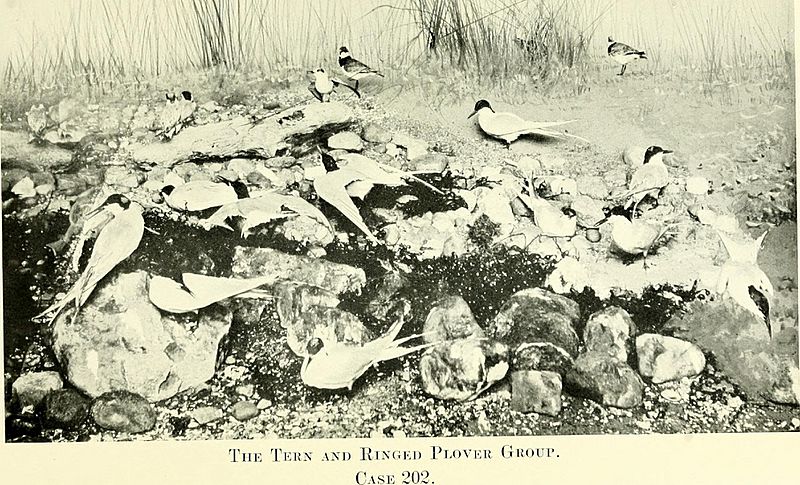Image: Handbook and guide to the British birds on exhibition in the Lord Derby Natural History Museum, Liverpool (1914) (14770678693)

Description: Identifier: handbookguidetob00live (find matches) Title: Handbook and guide to the British birds on exhibition in the Lord Derby Natural History Museum, Liverpool Year: 1914 (1910s) Authors: Liverpool Museum (Liverpool, England) Subjects: Liverpool Museum (Liverpool, England) Birds Publisher: Liverpool, C. Tinling Contributing Library: Smithsonian Libraries Digitizing Sponsor: Smithsonian Libraries View Book Page: Book Viewer About This Book: Catalog Entry View All Images: All Images From Book Click here to view book online to see this illustration in context in a browseable online version of this book. Text Appearing Before Image: ve colouration is wellillustrated in the group. ARCTIC TERN (Sterna macrura). This summer visitor reaches the British Islands at the end of April,and departs southwards in the autumn, the migrations lasting fromAugust to October. Large colonies breed round the coasts of GreatBritain and Ireland, but in the north of Scotland it is most numerouslyrepresented. In food and habits it resembles the Common Tern.Two to three eggs are laid and vary greatly in colour markings (seeBritish Bird Egg Cabinet, drawer 22). They are laid in depressionsin the sand or shingle. LITTLE TERN (Sterna minuta). This, the smallest of our terns, arrives early in May, and leavesin September or early in October. Its food is similar to the CommonTern. The breeding stations on the flat sandy or shingly shores arescattered along the coasts of the British Islands. Two or three stone-coloxued eggs are laid towards the end of May in hollows in the sandor shingle (see British Bird Egg Cabinet, drawer 22). In the group / Text Appearing After Image: 37 three recently hatched chicks are shown near the log of wood, and thecolour of down harmonizes so well with the colour surroundings thatthey are not seen without careful looking. RINGED PLOVER (.^gialitis hiaticola). There appear to be two races of Ringed Plover. The larger race,sometimes called the Ringed Dotterel, is more or less resident andinhabits the flat sandy portions of our coast. The smaller race visitsour shores for a brief period in spring. The four eggs are laid in ahollow in the ground often lined with fragments of shell. They arepale buff or stone-colour spotted with black or grey (see British BirdEgg Cabinet, drawer 20). Two broods are usually reared in a season.Here again the eggs and young so closely resemble their surroundingsthat they are difficult to find. Case 203. BLACK-HEADED GULL (Lams ridibmidus).Local names : Chir-maw, Cockle Maw, Laughing Gull. A common resident, abundant on our inland waters in great andincreasing numbers. This Gull is a useful friend t Note About Images Please note that these images are extracted from scanned page images that may have been digitally enhanced for readability - coloration and appearance of these illustrations may not perfectly resemble the original work.
Title: Handbook and guide to the British birds on exhibition in the Lord Derby Natural History Museum, Liverpool (1914) (14770678693)
Credit: https://www.flickr.com/photos/internetarchivebookimages/14770678693/ Source book page: https://archive.org/stream/handbookguidetob00live/handbookguidetob00live#page/n75/mode/1up
Author: Internet Archive Book Images
Permission: At the time of upload, the image license was automatically confirmed using the Flickr API. For more information see Flickr API detail.
Usage Terms: No known copyright restrictions
License: No restrictions
License Link: https://www.flickr.com/commons/usage/
Attribution Required?: No
Image usage
The following page links to this image:

